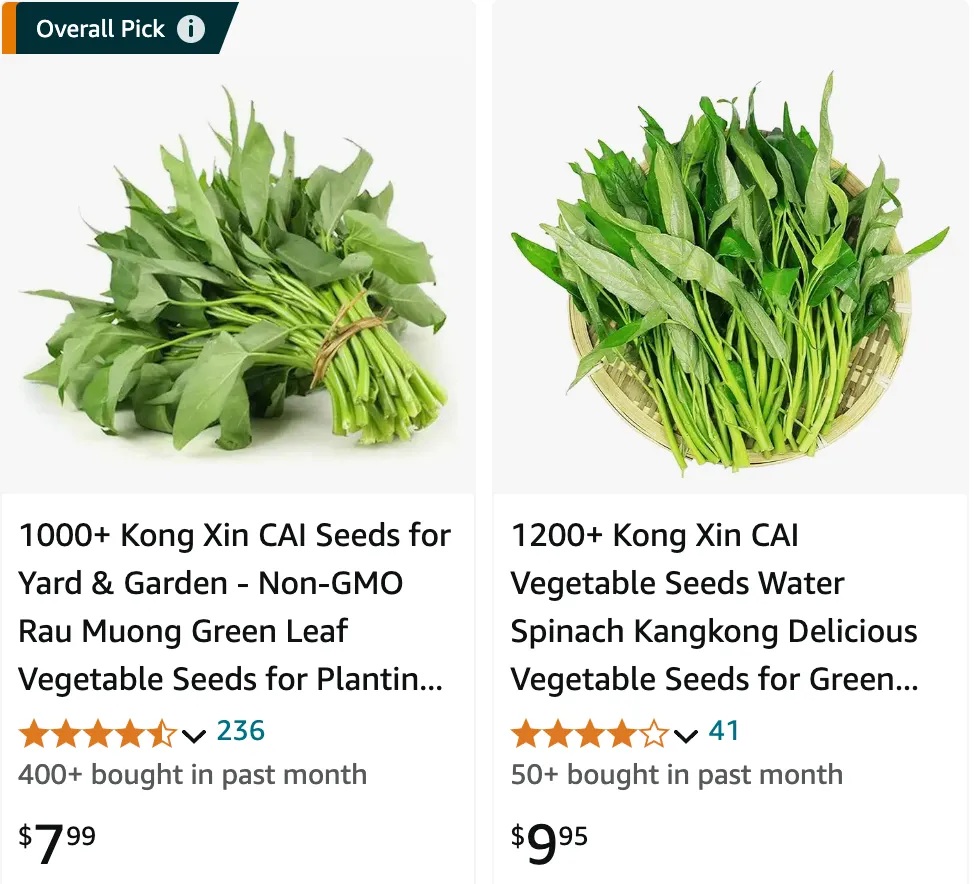
Morning Glory Vegetable: FAQs and All You Need to Know
I’ve been growing Morning Glory Vegetable (also known as Kangkong, Ipomoea Aquatica) for a while, and it’s one of the easiest and most rewarding plants to cultivate in a garden. Often referred to as water spinach, this fast-growing, leafy green is a staple in many Southeast Asian dishes. It’s packed with nutrition, versatile in the kitchen, and relatively simple to care for. Let me dive into some of the frequently asked questions and important details about this fantastic plant.
What Is Morning Glory Vegetable?
Morning Glory Vegetable is an aquatic plant that belongs to the family Convolvulaceae. Native to Southeast Asia, it thrives in warm, humid climates and grows best in waterlogged areas like rice paddies or ponds.
Morning Glory Vegetable in Different Languages
Morning Glory Vegetable is popular across Asia and beyond, known by various names:
- In Filipino/Tagalog: Kangkong
- In Hindi: Kolmi Shak
- In Korean: Gungchae
- In Vietnamese: Rau Muống
- In Thai: Phak Bung
- In Malay: Kangkung
- In French: Liseron d’eau
Morning Glory Vegetable Nutrition
One of the main reasons I love growing Morning Glory Vegetable is for its nutritional value. It’s rich in vitamins A, C, and B complex, along with minerals like iron, calcium, and potassium. Additionally, it’s a great source of dietary fiber. If you’re looking for a low-calorie, nutrient-dense vegetable to add to your diet, Morning Glory Vegetable is an excellent choice.
Morning Glory Vegetable Benefits
The benefits of eating Morning Glory Vegetable are numerous. It’s known to promote good digestion, thanks to its high fiber content. It’s also linked to improved eye health due to its high vitamin A levels. The iron content helps combat anemia, making it an ideal vegetable for those needing an iron boost. Its antioxidant properties contribute to overall wellness by reducing oxidative stress in the body.
How to Grow Morning Glory Vegetable?
Growing Morning Glory Vegetable is relatively easy, whether you’re cultivating it in your garden or in containers. Here’s how I do it:
- Location: Choose a sunny spot. Morning Glory Vegetable thrives in full sunlight, although it can tolerate partial shade.
- Soil: While it grows best in waterlogged conditions, you can also plant it in moist, well-drained soil.
- Watering: Keep the soil consistently moist. I water my plants daily to ensure they don’t dry out.
- Fertilizing: Use a balanced, water-soluble fertilizer once a month to encourage growth.
- Harvesting: Harvest when the stems are tender—usually within 30 to 45 days of planting.
How to Care for Morning Glory Vegetable?
Caring for Morning Glory Vegetable is straightforward. The plant doesn’t require much fuss. Regular watering and occasional feeding are usually enough. Prune the plant regularly to encourage bushier growth, and watch out for pests like aphids or caterpillars. I use organic neem oil to keep the pests at bay.
How to Propagate Morning Glory Vegetable?
Propagating Morning Glory Vegetable can be done through cuttings or seeds. When using cuttings, select healthy, mature stems, and place them in water or moist soil. They’ll develop roots within a week or two. If you’re growing from seeds, plant them directly in the soil after the last frost, and they’ll germinate quickly in warm weather.
Morning Glory Vegetable Companion Plants Vegetables
Companion planting can help your Morning Glory Vegetable thrive. I like to plant it alongside beans, which fix nitrogen in the soil, benefiting the Morning Glory Vegetable. You can also pair it with other leafy greens like spinach or lettuce. Avoid planting it near root vegetables, as it competes for the same nutrients.
How to Cook Morning Glory Vegetable?
Cooking Morning Glory Vegetable is incredibly versatile. One of my favorite ways to prepare it is stir-frying. The tender stems and leaves absorb flavors well, making them perfect for quick sautéing with garlic, soy sauce, and chili. Another classic recipe is adobong kangkong, a Filipino dish where the vegetable is cooked with vinegar, soy sauce, and garlic. You can also blanch the leaves and serve them with a tangy dipping sauce for a light, healthy side dish.
Morning Glory Vegetable Recipes
Morning Glory Vegetable lends itself to various dishes across different cuisines. Some popular recipes include:
- Thai Stir-Fried Morning Glory (Phad Phak Bung Fai Daeng): A simple yet flavorful dish made with garlic, chili, and oyster sauce.
- Vietnamese Stir-Fried Rau Muống with Garlic: This is a common side dish served with steamed rice and fish sauce.
- Filipino Adobong Kangkong: A tangy and savory dish that’s easy to prepare and pairs well with grilled meat or fish.
Morning Glory Vegetable in Chinese Cuisine
In Chinese cuisine, Morning Glory Vegetable (Ong Choy) is often stir-fried with fermented bean curd or garlic. It’s a popular dish in many Chinese restaurants and is loved for its crunchy texture and ability to absorb robust flavors.
Morning Glory Vegetable in Other Cultures
Morning Glory Vegetable is celebrated in various Asian cultures. In Korean cuisine, it’s often used in soups or stews, while in India, it’s known as Kolmi Shak and is used in traditional Bengali dishes. The versatility of this vegetable is truly remarkable.
Final Thoughts
Morning Glory Vegetable is a must-have in any vegetable garden, especially if you enjoy Southeast Asian cooking. Its nutritional benefits, ease of growth, and versatility in the kitchen make it a valuable addition to your culinary and gardening repertoire. Whether you’re growing it for its health benefits or for its delicious taste, you’ll find that Morning Glory Vegetable is a rewarding plant to cultivate and enjoy.
If i die, water my plants!


